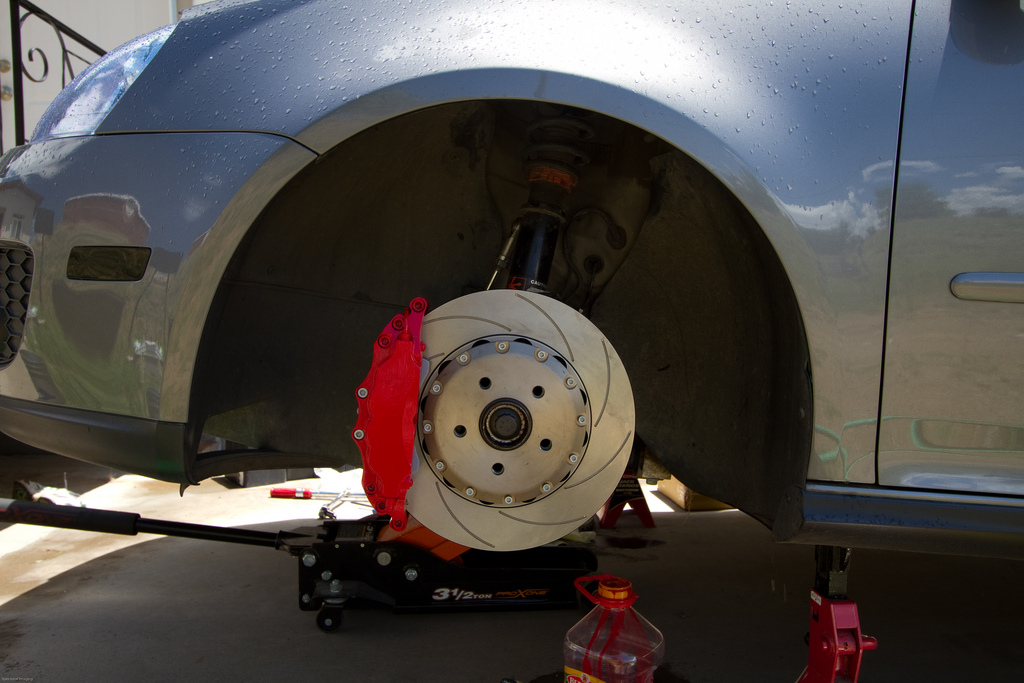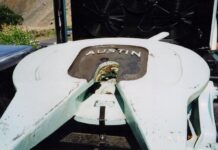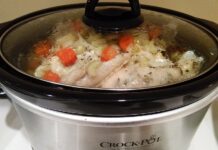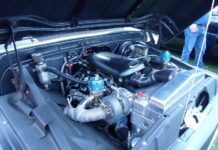
You hear the screeching when you get near the stop sign. It’s time to change the brakes again. Last time it went well, minus the flushing.
You just don’t have another qualified person to help. Thankfully, a few companies have designed bleeding kits that will speed up the fluid flushing process and let you do it solo.
What is the best brake bleeder for your purposes, though? The following buyers guide will give you a few tiips and ideas for what to buy.
Read customer reviews of good brake bleeder kits on the market on Amazon.
Buyers guide
When buying brake bleeders, consider what method of bleeding you want to try.
The easiest way to bleed your brakes is with a reverse air pressure system, but there are many adherents of the other three methods.
When looking in the auto store, you should see examples of the vacuum, pressure and pump-and-hold kits.
Bleeding kits that utilize compressed air to drain the line are typically more expensive than hand pumps, but provide the convenience of not having your forearms burning from all the squeezing.
The style of the hand pump’s handle will be important as well. Is it ergonomic? Is it cushioned?
Reservoir capacity, length of tubing
Also, looking at the capacity of the fluid reservoir is important, too. Larger vehicles will require more brake fluid, and that equates to more pumping if it’s a hand pump.
The length of tubing provided will be another important aspect. Is it long enough for you to see the top of the master cylinder reservoir?
Additional tools
While you’re buying a brake bleeder, also look for accessory tools.
Such tools would include a funnel for the brake reservoir, nitrile or latex gloves to protect your hands, and of course, a bottle of brake fluid. Most vehicles take DOT-3 brake fluid.
Be sure to check your owner’s manual to make sure you buy the right brake fluid when you’re in the store. It’s also important to read thoroughly the instructions and safety issues printed on the bottle.
The amount of brake fluid you buy depends on how much work you want to do. If you want to flush and replace the brake fluid, go for the larger brake fluid bottle.
You may also want to buy an 8mm or 10 mm 6-point box wrench to apply to the brake caliper, if you don’t have those wrenches in your toolbox, you might want to buy both. Otherwise, measure your caliper to find out the correct wrench to acquire. Many experts insist on the six-point wrench to protect the caliper screw.
Reverse brake bleeding system
When buying a reverse brake bleeding system, look for the kit with a bleeder that looks like a pistol.
It’s basically a pump, with a barrel and a handle to pump the brake fluid. It comes with hoses and attachment pieces so you can get the exact fit between your hose and a bleeder reservoir, and a hose and a brake caliper.
Consider this when looking at brake bleeding systems: The reverse method is so simple, it is impressive. Sources say it’s predicated on the idea that air in the brake lines want to travel up to the reservoir and not down and out the brake calipers. It’s simple gravity.
In the store, look for everything you need to attach the hose at the brake caliper, and how the tool pumps brake fluid in. The air goes to the reservoir, forming small bubbles on the surface.
Once finished, you just close the caliper and move to the next wheel.
Going solo
Another one-person operation is a vacuum bleeder. In the store, a vacuum pump with hoses and attachments is the kit you want.
The thing to look for on a vacuum bleeder is the pump pistol and a reservoir that sits just before it.
The tool sucks brake fluid out of the lines and into the reservoir until the air bubbles
are clear.
Another popular one-man method is the brake pressure bleeder. When looking for this tool, consider a kit with a large gallon jug and accompanying hoses and nozzle fittings.
A good thing to find on a pressure pump is a gauge that measures the pressure the user produces by pumping the handle on top of the jug.
Also check to make sure the unit attaches to the brake reservoir under the hood of the car. Because this is a one-man bleeding operation, make sure the kit includes a reservoir to catch the brake fluid beneath the caliper.
Look for a reservoir with a wire hook or someway to hang it from the brake unit at the wheel. Like the earlier methods, this system uses hoses and pressure to remove brake fluid. It applies pressure at the reservoir to force the bubbles out the calipers.
Pump-and-hold kit
Because it’s so inexpensive, the traditional pump-and-hold kit appeals to many. Look for a kit with a hose and bottle to carry out this method.
You must have another person behind the wheel who can depress the brake pedal and release it during the operation.
With another person to help, you are free to buy this simple, inexpensive kit. It has a single bottle and a brake bleeding hose.
It comes with and without nipples for the brake caliper; the hose fits over the caliper nicely. This is a great budget tool. Find it next to other brake bleeder tools at the auto shop.
Cost
Cost will play into the picture, also. If you’re changing the brakes on your main car, you probably don’t need to shell out a pretty penny for an extravagant bleeder kit. However, if you’re clearing the air out of the lines of your weekend racer, then you may want to spend the extra money.
Find the best brake bleeder in 2023 on Amazon.
Originally posted 2023-01-06 00:01:31.


